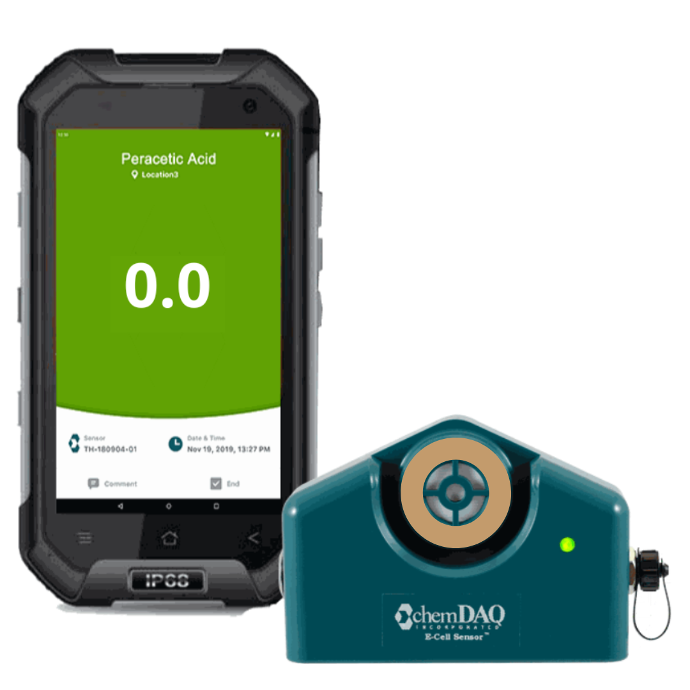Get to Know the Gases

Ethylene Oxide
EtO is a sterilant chemical used in hospitals and the medical device manufacturing industry. EtO is a very effective sterilant, with excellent material compatibility, but it is also a known carcinogen, mutagen and teratogen and so exposure can cause serious health effects. It’s also a colorless chemical that is highly flammable and reactive at room temperature.

Hydrogen Peroxide
H₂O₂ is a sterilant chemical used in hospitals and aseptic packaging facilities. H₂O₂ is a strong oxidant. Contact with the liquid can cause chemical burns, and exposure to the vapor can cause damage to the eyes and the respiratory system. H₂O₂ is environmentally friendly because its high reactivity results in a short residence time if it is released into the environment and the benign decomposition products are only oxygen and water.

Peracetic Acid
PAA is a widely-used disinfectant chemical in hospitals and throughout the food processing industry. PAA is a stronger oxidizing agent than even H₂O₂. Contact to the chemical can cause chemical burns and exposure to the vapor can cause damage to the eyes and respiratory system. PAA solution is a colorless liquid with a strong vinegar-like odor. Like H₂O₂, PAA is environmentally friendly because it rapidly breaks down to form benign products, namely oxygen and acetic acid, so PAA is safe for direct food contact.
What Makes Sterilant Chemicals Harmful?
Sterilant chemicals are designed to kill all microorganisms, including resistant spores in certain bacteria. If these chemicals were not toxic, they would not be effective at doing their job to sterilize and eliminate bacteria from the foods and beverages we consume and the medical devices we need. However, many studies have associated these chemicals with a variety of adverse health conditions, which is why continuous monitoring is a must to keep workers safe.

Exposure Limits
Leading governmental agencies and industry safety associations have deemed these chemicals unsafe if exposed beyond certain levels. The Occupational Safety and Health Administration (OSHA) has promulgated permissible exposure limits (PELs) for EtO gas and H₂O₂ as time weighted averages (TWAs). OSHA has yet to issue a PEL for PAA, but the American Conference of Government and Industrial Hygienists (ACGIH) has issued a Threshold Limit Value (TLV).
Together, federal and industry partners see the need to closely monitor levels of these sterilant chemicals and have set forth inspections, regulations and standards employers must abide by to ensure a safe work environment for all employees exposed to EtO, H₂O₂ and PAA.
Continuous Monitoring Solutions
The installation of a ChemDAQ continuous monitoring system could save a life. Our systems are designed to routinely monitor levels of EtO, H₂O₂, and PAA and have several features to notify you if and when a problem may arise.
Let Us Help Keep Workers Safe
New to chemical monitoring and not sure where to begin? Let our team of safety experts guide you through the process.
